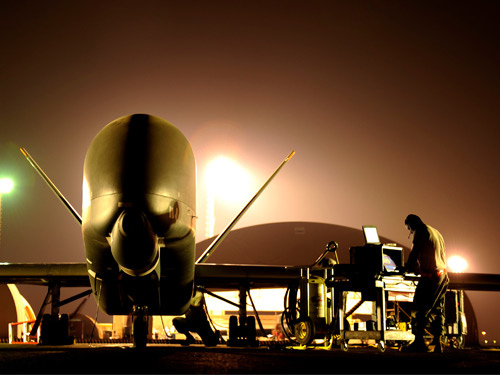
Robohub.org
Global Hawks in the crowded Mediterranean airspace

The use of UAVs has skyrocketed, a wide variety of systems ranging from extremely small flying bots to large airframes like the Predators or Global Hawk drones is currently in use, mostly from armed forces around the world. Despite this growth, UAVs in civil airspace is a very rare sight with a lot of bureaucracy and strange ramifications.
During the Libya crisis many people who monitor aerial traffic as a hobby, report what is going on from their twitter accounts (like @FMCNL from The Netherlands). One of the most exotic planes for radio plane-spotters is the RQ-4 Global Hawks based in southern Italy that operates in a very crowded region. As David Cenciotti describes in his blog they use special corridors and dedicated climb/descent areas for proper deconfliction with other traffic while specific notifications are also given to other aircrafts. The Global Hawk as a system has two separate ground segments a Launch and Recovery Element (LRE), and a Mission Control Element (MCE). When they are beyond line of sight they are piloted via satellite link. However they carry radio equipment that enable pilots working at the ground station to talk as if they were on the aircraft. Air Traffic controllers communicate with the virtual pilots in a similar way to the ones in human piloted aircraft. The use of large UAVs (military and of course civilian) inevitably will increase and they will communicate routinely like that or in a more advanced stage they may be able to transmit messages on their own.
tags: c-Military-Defense, cx-Aerial, Flying, policy, review, Robotics technology, Service Professional Military UAV




